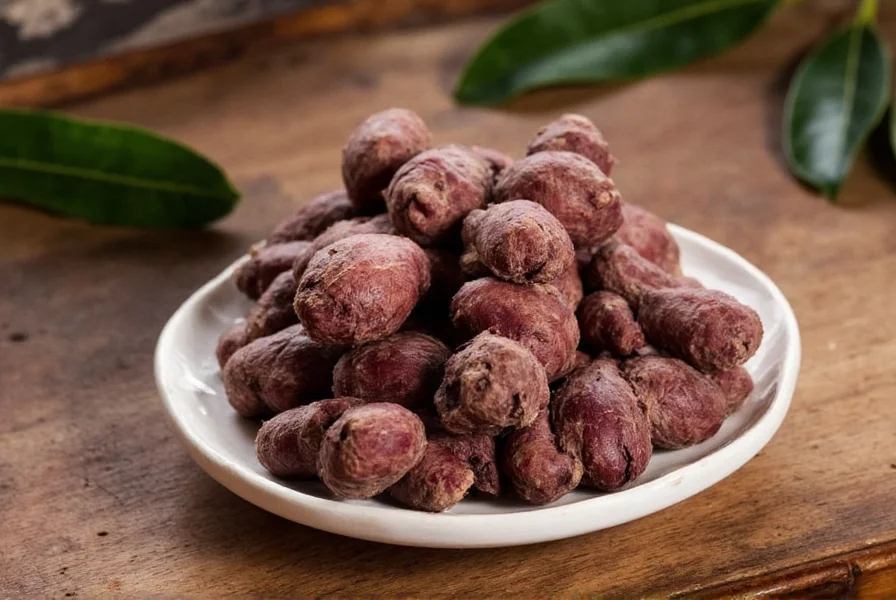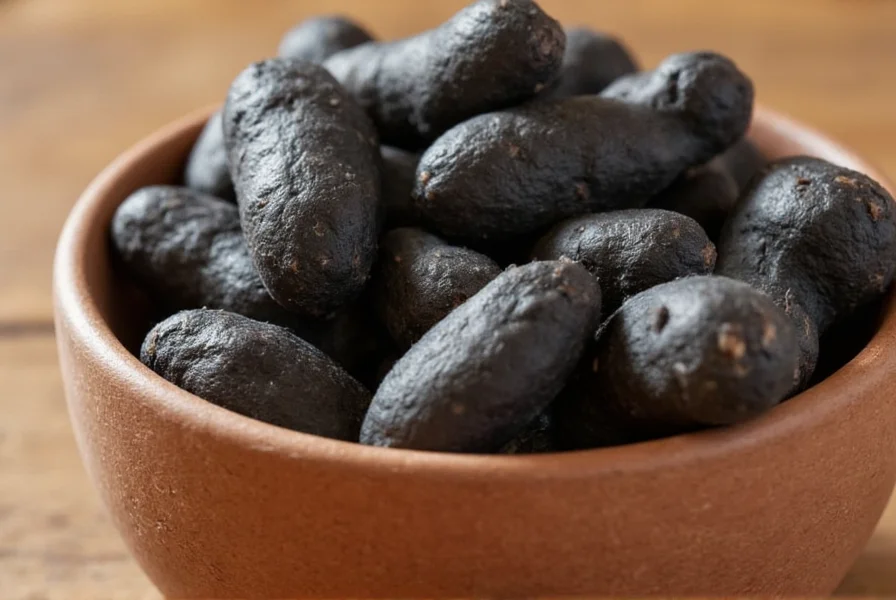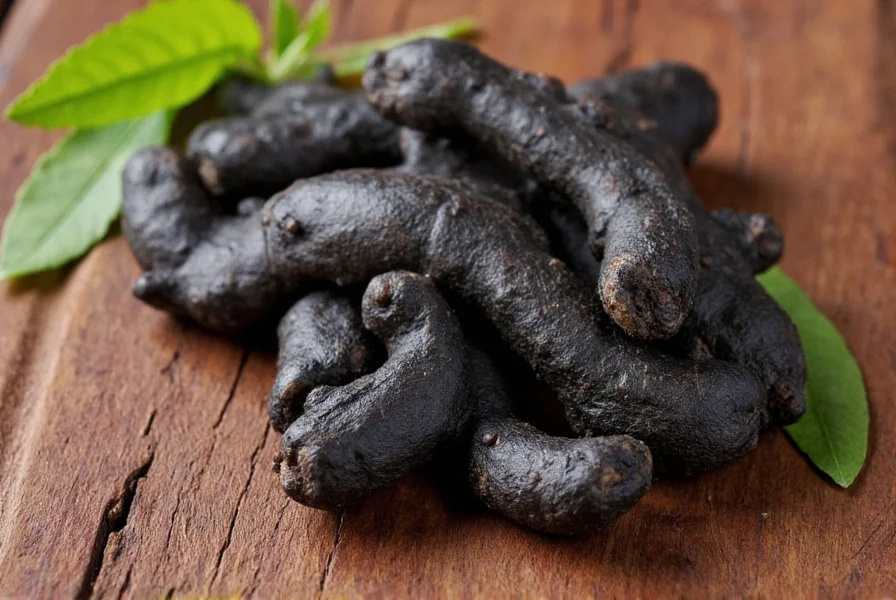When people search for "ginger black," they're typically seeking information about this specific botanical variety rather than regular ginger with a blackened appearance. Understanding the difference between these plants is crucial for anyone interested in herbal medicine, culinary applications, or natural wellness solutions.
Botanical Characteristics of Black Ginger
Black ginger (Kaempferia parviflora) belongs to the Zingiberaceae family but is taxonomically distinct from common ginger. The plant features:
- Dark purple to black rhizomes (underground stems) that give it its name
- Small, heart-shaped leaves growing close to the ground
- Delicate purple flowers
- Typical height of 15-30 cm when mature
Native to the tropical forests of Thailand, Laos, and Malaysia, black ginger thrives in shaded, humid environments. The rhizomes develop their characteristic dark color as they mature, with older specimens showing deeper pigmentation.

Black Ginger vs. Regular Ginger: Key Differences
Despite the similar names, black ginger and regular ginger have significant differences that affect their uses and properties:
| Characteristic | Black Ginger (Kaempferia parviflora) | Regular Ginger (Zingiber officinale) |
|---|---|---|
| Botanical Family | Zingiberaceae (different genus) | Zingiberaceae |
| Rhizome Color | Dark purple to black | Pale yellow to light brown |
| Active Compounds | Polymethoxyflavones (PMFs) | Gingerols, shogaols |
| Traditional Uses | Energy, circulation, vitality | Digestion, nausea, inflammation |
| Taste Profile | Milder, less pungent, earthy | Spicy, pungent, warming |
Traditional Applications in Southeast Asian Medicine
For centuries, black ginger has played an important role in traditional medicine systems across Thailand and neighboring countries. Local communities have used it for:
- Enhancing physical stamina and reducing fatigue
- Supporting healthy circulation
- Traditional remedies for joint discomfort
- Seasonal wellness support
- As part of postpartum recovery practices
Unlike regular ginger which is commonly used in cooking, black ginger has primarily been valued for its medicinal properties. Traditional preparation methods include drying the rhizomes and preparing them as decoctions, powders, or tinctures.
Scientific Research on Black Ginger Benefits
Modern research has begun investigating the traditional uses of black ginger, with promising findings about its unique compounds called polymethoxyflavones (PMFs). Studies suggest potential benefits including:
- Antioxidant properties: Black ginger contains high levels of antioxidants that may help protect cells from oxidative stress
- Circulatory support: Research indicates potential benefits for healthy blood flow
- Metabolic health: Some studies show effects on healthy metabolic function
- Joint health: Traditional use for joint comfort is being examined in clinical settings
A 2020 review published in the Journal of Ethnopharmacology highlighted that black ginger's unique phytochemical profile differs significantly from regular ginger, explaining its distinct effects. However, researchers note that more extensive human studies are needed to fully understand its mechanisms and optimal usage.
Culinary Uses of Black Ginger
While primarily medicinal, black ginger does have culinary applications, though they differ from regular ginger:
- Used sparingly in traditional Thai herbal drinks and tonics
- Added to rice dishes for subtle flavor and color
- Infused in vinegars for salad dressings
- Used in small amounts in herbal teas
Because of its milder flavor profile compared to regular ginger, black ginger won't provide the same spicy kick in recipes. Those looking to substitute black ginger for regular ginger in cooking should adjust quantities and expectations accordingly. The distinctive dark color can also affect the appearance of dishes.

Availability and How to Use Black Ginger
Fresh black ginger remains relatively rare outside its native regions, but several forms are becoming more accessible:
- Dried slices: Most common form available internationally
- Powder: Convenient for adding to drinks or recipes
- Capsules and extracts: Standardized for consistent potency
- Tea blends: Often combined with other herbs
When using black ginger products, look for those that specify Kaempferia parviflora to ensure you're getting authentic black ginger rather than regular ginger that's been processed to appear dark. Proper storage in a cool, dark place helps preserve the active compounds.
Safety Considerations
Black ginger appears generally well-tolerated when used appropriately. However, certain considerations apply:
- As with any botanical, potential interactions with medications exist
- Pregnant or nursing women should consult healthcare providers before use
- Those with bleeding disorders should exercise caution
- May affect blood sugar levels, so diabetics should monitor accordingly
- No established dosage guidelines exist for long-term use
Unlike regular ginger which has extensive safety data from culinary use, black ginger's safety profile is less documented due to its primarily medicinal application. Starting with small amounts helps assess individual tolerance.
Conclusion
Black ginger (Kaempferia parviflora) represents a unique botanical with a rich history in traditional medicine and emerging scientific interest. Distinct from regular ginger in both appearance and properties, this plant offers potential wellness benefits that continue to be explored through modern research. Understanding the differences between black ginger and common ginger helps consumers make informed choices about their herbal wellness routines. As interest in traditional botanicals grows, black ginger stands out as a fascinating example of nature's diversity and the value of preserving traditional knowledge.
Frequently Asked Questions
Is black ginger the same as regular ginger?
No, black ginger (Kaempferia parviflora) is botanically distinct from regular ginger (Zingiber officinale). They belong to different genera within the same plant family, have different active compounds, and exhibit different properties and traditional uses.
What makes black ginger turn black?
The dark purple to black color of black ginger rhizomes comes from anthocyanins and other pigments that develop as the plant matures. Older rhizomes typically show deeper coloration, and the darkness intensifies when the rhizomes are dried.
Can I grow black ginger at home?
Yes, but it requires specific conditions. Black ginger needs warm temperatures (75-85°F), high humidity, and partial to full shade. It grows best in well-draining, rich soil and can be grown in containers indoors in non-tropical climates with proper care.
Does black ginger have the same health benefits as regular ginger?
No, black ginger offers different potential benefits due to its unique composition. While regular ginger is known for digestive support and anti-nausea properties, black ginger contains polymethoxyflavones associated with circulation support and energy enhancement. They complement rather than duplicate each other's effects.
How can I tell if I'm getting authentic black ginger products?
Look for products that clearly state Kaempferia parviflora on the label. Authentic black ginger products should specify the plant part used (typically rhizome) and may include standardization information for key compounds like polymethoxyflavones. Reputable suppliers provide botanical verification and origin information.











 浙公网安备
33010002000092号
浙公网安备
33010002000092号 浙B2-20120091-4
浙B2-20120091-4